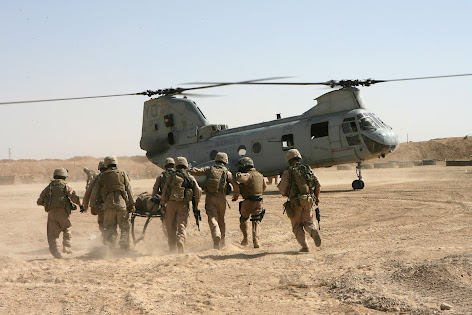Flight Control System
Flight Control Systems consists of flight surfaces such as ailerons, rudders, and elevators; however, they also consist of springs, bell cranks, and pushrods. While there may be failures in a flight control surface, many failures can be traced back to the flight control linkages that connect cockpit controls to flight surfaces.
Indications of flight control system failure may include:
- Binding in the controls or lack of free movement
- Unresponsiveness of aircraft with cockpit control input
- Loss of controlled flight
Potential causes of flight control failure:
- Foreign objects can become lodged in the control system and restrict movement
- Maintenance failure that could include improper maintenance or parts installed incorrectly
- Failure in the linkage, bearings, or control rods
A specific flight control failure that I am familiar with is the Swashplate Duplex Bearing Failure in the CH-53E Super Stallion. It is pictured below removed from the aircraft.
In 1996, a CH-53E Super Stallion crashed at the Sikorsky factory in Stratford, Connecticut killing four Sikorsky employees while it conducted test flights prior to government delivery. The crash was attributed to a failure of the duplex bearing in the swashplate. The manufacturer, Kaydon, discovered there were issues with the quality of the plating on the bearings, which caused the swashplate to seize in flight. As you can see from the example picture below, a
bearing failure between the rotating and non-rotating plate would result in loss of rotor control.
The mitigation for what would be referred to as a “quality escape” in today’s logistics terminology, was the replacement of 200 swashplate assemblies at the cost of roughly 30 million dollars. Additionally, an in-flight Bearing Monitor System was developed and installed to check for bearing heat and vibration to monitor for impending failure in all phases of flight.
Word Count 298
References
Federal Aviation Administration (FAA). (2016). Pilot’s Handbook of Aeronautical Knowledge (PHAK). Retrieved https://www.faa.gov/regulations_policies/handbooks_manuals/aviation/phak/
Harr, D. (1996, June 27). Jury probes maker of part blamed in Sikorsky crash. Hartford Courant. https://www.courant.com/news/connecticut/hc-xpm-1996-06-27-9606270194-story.html
Hess, P. (2000, August 29). Six White House helicopters grounded by Marines. United Press International. https://www.upi.com/Archives/2000/08/29/Six-White-House-helicopters-grounded-by-Marines/8989967521600/
Rotaru, Constantin & Todorov, Michael. (2018). Helicopter Flight Physics. Intech. http://dx.doi.org/10.5772/intechopen.71516









